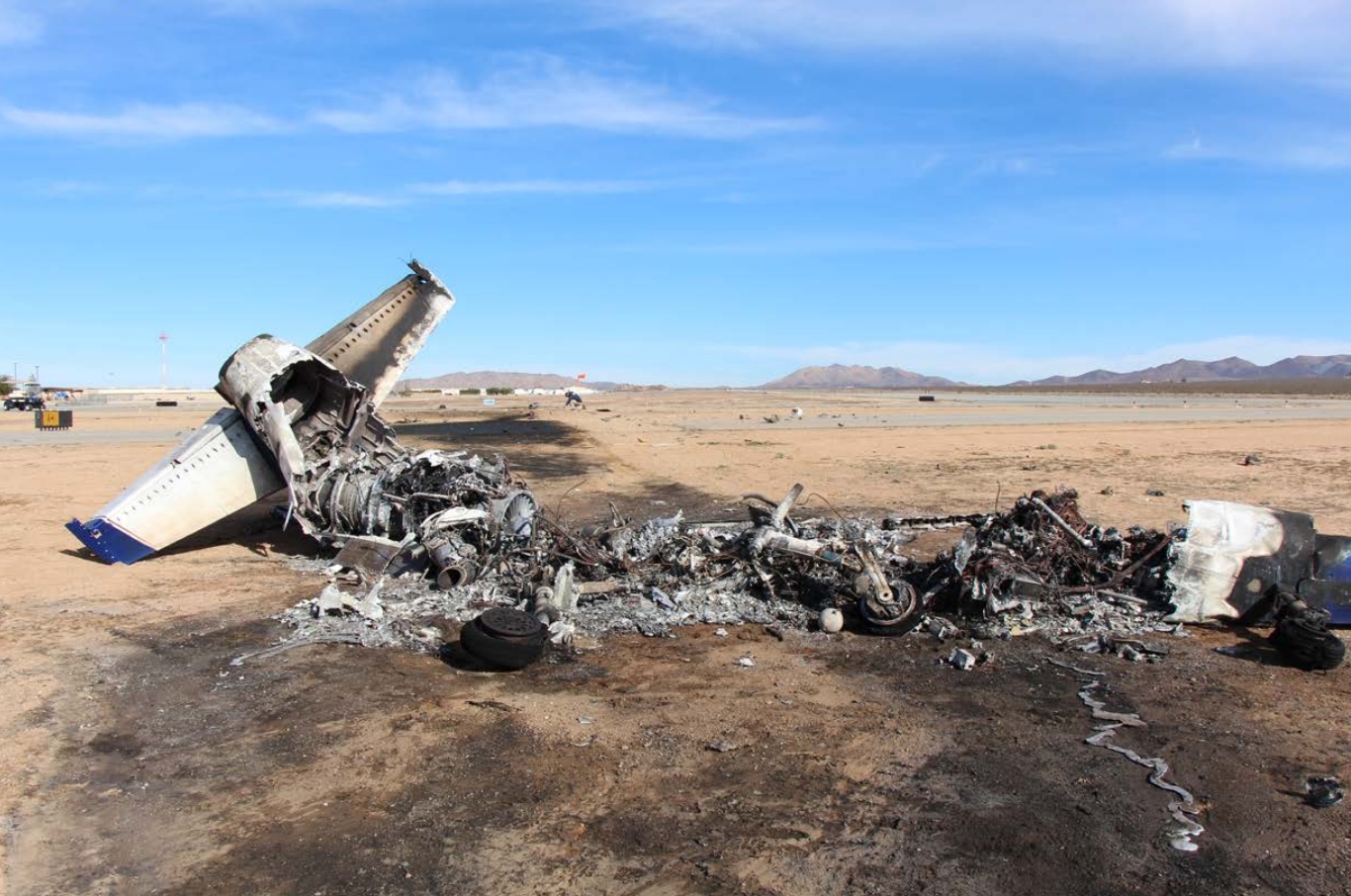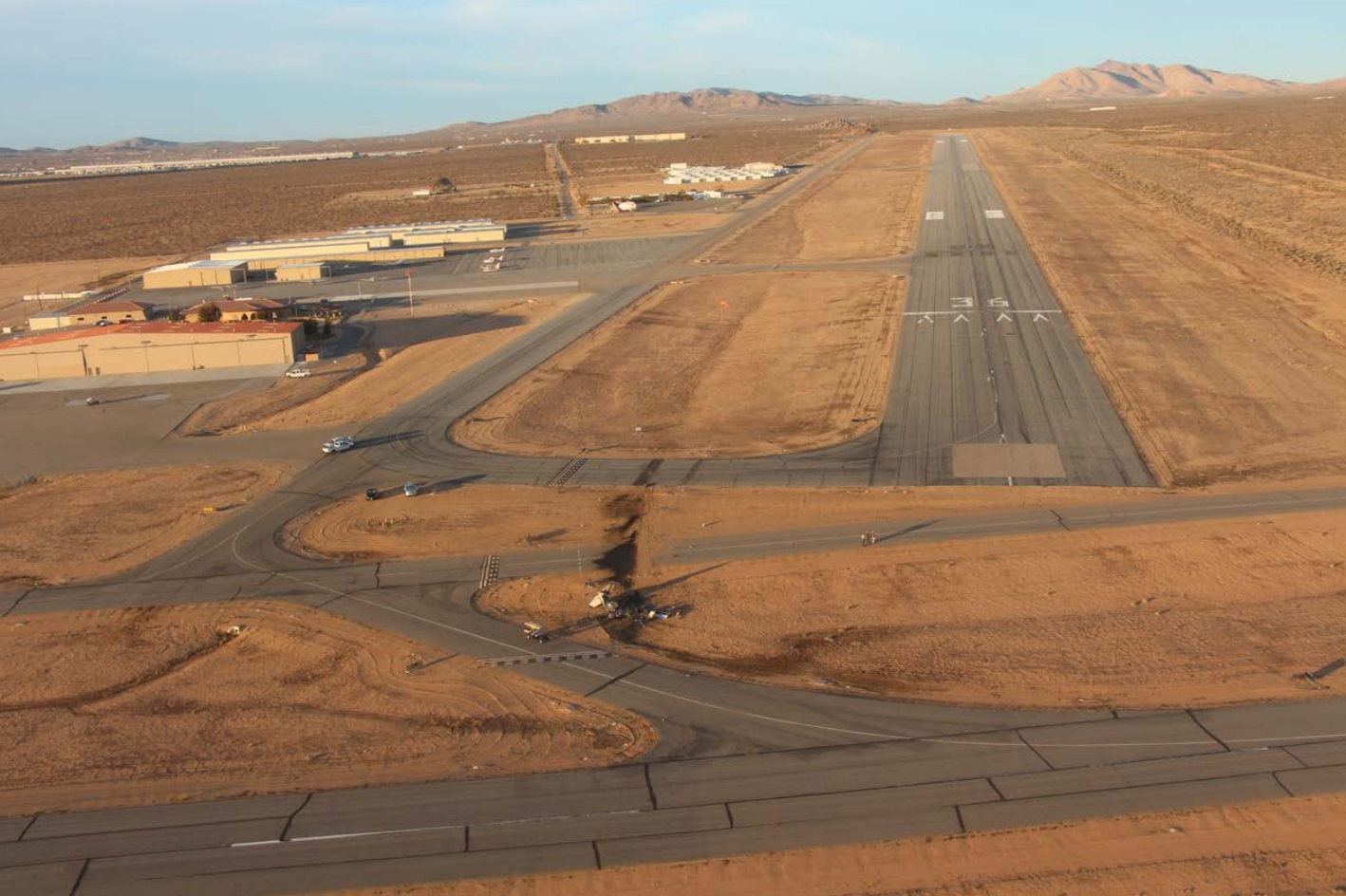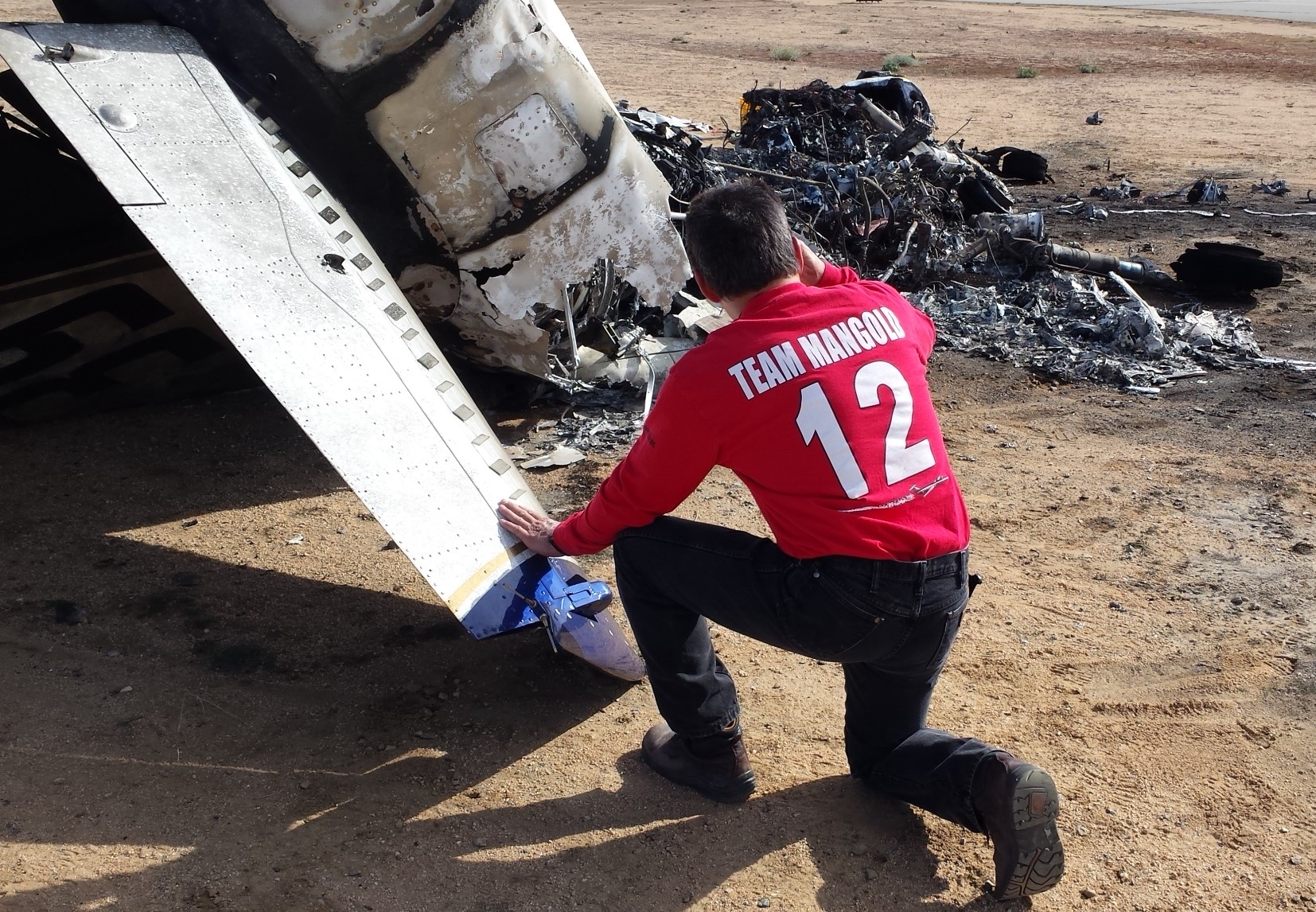
ASN Wikibase Occurrence # 182057
This information is added by users of ASN. Neither ASN nor the Flight Safety Foundation are responsible for the completeness or correctness of this information.
If you feel this information is incomplete or incorrect, you can submit corrected information.
| Date: | Sunday 6 December 2015 |
| Time: | 14:07 |
| Type: |  Aero Vodochody L-39 Albatros |
| Owner/operator: | Private |
| Registration: | N39AY |
| MSN: | 332703 |
| Year of manufacture: | 1993 |
| Total airframe hrs: | 2062 hours |
| Engine model: | Ivchenko AI-25TL |
| Fatalities: | Fatalities: 2 / Occupants: 2 |
| Aircraft damage: | Destroyed |
| Category: | Accident |
| Location: | Apple Valley Airport (KAPC), Apple Valley, CA -
 United States of America United States of America
|
| Phase: | Take off |
| Nature: | Private |
| Departure airport: | Apple Valley Airport, CA (APV/KAPV) |
| Apple Valley Airport, CA (APV/KAPV) | |
| Investigating agency: | NTSB |
| Confidence Rating: |
The airline transport pilot was taking the private-pilot-rated passenger on a local flight in the former foreign-military jet trainer. After the airplane was refueled, the pilot delivered his customary 1-hour safety briefing to the passenger. The pilot subsequently taxied the airplane to the airport run-up area and, after a brief pause, to the runway. As the pilot initiated the takeoff roll, a witness observed dark gray smoke coming from the engine exhaust. When the airplane was about halfway down the runway and about 100 ft above ground level, the engine experienced a total loss of power. The airplane maintained altitude until it reached the end of the runway, at which point it rolled left, descended rapidly, and impacted the ground. A postcrash fire erupted that destroyed the majority of the airplane.
Postaccident examination of the airplane revealed no evidence of any preimpact anomalies with the airplane's control system; however, control continuity could not be confirmed due to the extensive thermal damage to the airframe. Postaccident examination of the engine revealed that thermal distress of the 2nd and 3rd stage turbine nozzles and blades led to failure of the 2nd stage turbine blades, which rendered the engine incapable of producing thrust. All the fuel nozzles were below factory allowable limits in terms of flow rate and spray pattern and failed the factory functional test procedure. The asymmetrically deteriorated conditions of the installed fuel nozzle set matched the asymmetrically deteriorated condition of the 2nd stage turbine nozzle.
The maximum metered fuel delivery pressure measured on the test bench for the fuel control unit (FCU) was 85 atmospheres (atm). The typical maximum metered fuel delivery pressure for a normally operating engine to produce maximum approved thrust is 48 to 50 atm of pressure with an absolute maximum fuel pressure of 65 atm. The FCU was adjusted back to 50 atm during the test, indicating that there was no internal fault with the FCU but rather it had been purposely adjusted to 85 atm fuel pressure.
A search of the maintenance logbooks did not reveal when or where this FCU fuel pressure adjustment occurred. During the inspection and engine performance run-up of the engine performed about 2 weeks before the accident, maintenance personnel should have noticed an overly high fuel pressure, but this did not occur, making it likely that the FCU was adjusted after the inspection. It is possible that whoever made this adjustment did not understand or appreciate the fuel nozzle condition and erroneously tried to increase the fuel pressure to compensate for the low flow rate of the fuel nozzles.
The manual adjustment of the FCU to deliver an overly high fuel pressure combined with the deteriorated condition of the fuel nozzles likely led to the heat-deteriorated condition of the 2nd and 3rd stage turbine nozzles and blades within a short period of time. Further, two of the four thermocouples that sense exhaust gas temperature had failed, which increased the likelihood of an incorrect cooler-than-actual temperature indication in the cockpit. As a result, the pilot likely did not observe any indication of engine thermal distress before the power loss.
Probable Cause: A total loss of engine power on takeoff, which resulted from a sudden over-temperature condition due to an improperly adjusted fuel control unit and the deteriorated condition of the fuel nozzles.
Accident investigation:
 |
|
Sources:
NTSB
FAA register: http://registry.faa.gov/aircraftinquiry/NNum_Results.aspx?NNumbertxt=39AY
Location
Images:

Photo: NTSB

Photo: NTSB

crash site 12-6-2015

12-7-2015,the morning after; Mike's brother Rob Mangold at debris field, final salute to Mike.
Media:
Dateline: 2020 Update; The Mike Mangold Story Continues, https://youtu.be/nJAH3ndOwfE L-39 Investigation Team Breakthrough New Evidence… --Miss my brother Mike, --Rob Video #2 below https://youtu.be/mYxk-NcckAw video #3 below: Video #5 below: Video #6 Mechanic Interview Video#7 Aero Vodochody, Disintegration Report, Mechanic Analysis -end-
Revision history:
| Date/time | Contributor | Updates |
|---|---|---|
| 07-Dec-2015 02:16 | Geno | Added |
| 07-Dec-2015 03:21 | Geno | Updated [Registration, Cn, Operator, Nature, Departure airport, Source, Narrative] |
| 07-Dec-2015 07:35 | RPeasley | Updated [Departure airport] |
| 07-Dec-2015 08:57 | Iceman 29 | Updated [Embed code] |
| 07-Dec-2015 17:41 | Geno | Updated [Source] |
| 07-Dec-2015 18:15 | Anon. | Updated [Phase, Narrative] |
| 08-Dec-2015 17:34 | Alpine Flight | Updated [Time, Aircraft type] |
| 15-Dec-2015 20:06 | Aerossurance | Updated [Time, Nature, Destination airport, Source, Narrative] |
| 21-Dec-2016 19:30 | ASN Update Bot | Updated [Time, Damage, Category, Investigating agency] |
| 15-Nov-2018 08:48 | ASN Update Bot | Updated [Operator, Nature, Departure airport, Destination airport, Source, Narrative, Accident report, ] |
| 15-Nov-2018 08:52 | harro | Updated [Source, Narrative, Photo] |
| 15-Nov-2018 08:52 | harro | Updated [Photo] |
| 27-Mar-2020 06:38 | Rob Mangold | Updated [Embed code, Photo] |
| 27-Mar-2020 06:39 | Rob Mangold | Updated [Embed code, Photo] |
| 27-Mar-2020 07:30 | Rob Mangold | Updated [Embed code] |
| 27-Mar-2020 07:31 | harro | Updated [Departure airport, Destination airport, Accident report, ] |
| 02-Apr-2020 07:26 | Rob Mangold | Updated [Embed code] |
| 02-Apr-2020 07:42 | Rob Mangold | Updated [Embed code] |
| 15-Apr-2020 05:54 | Rob Mangold | Updated [Embed code] |
| 06-Feb-2024 08:43 | Anon. | Updated [Embed code] |
| 07-Feb-2024 07:02 | Rob Mangold | Updated [Embed code] |
Corrections or additions? ... Edit this accident description
The Aviation Safety Network is an exclusive service provided by:


 ©2024 Flight Safety Foundation
©2024 Flight Safety Foundation